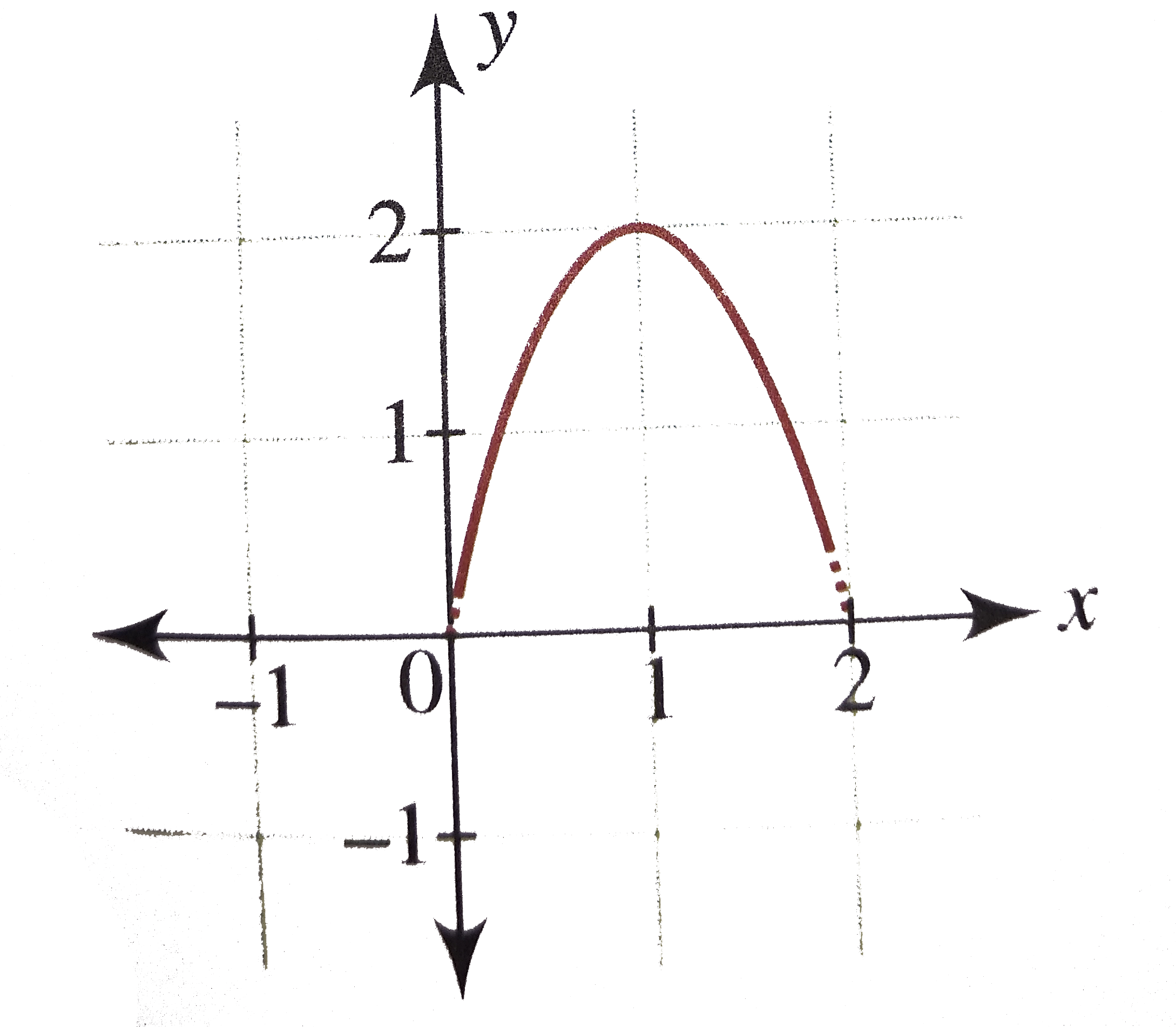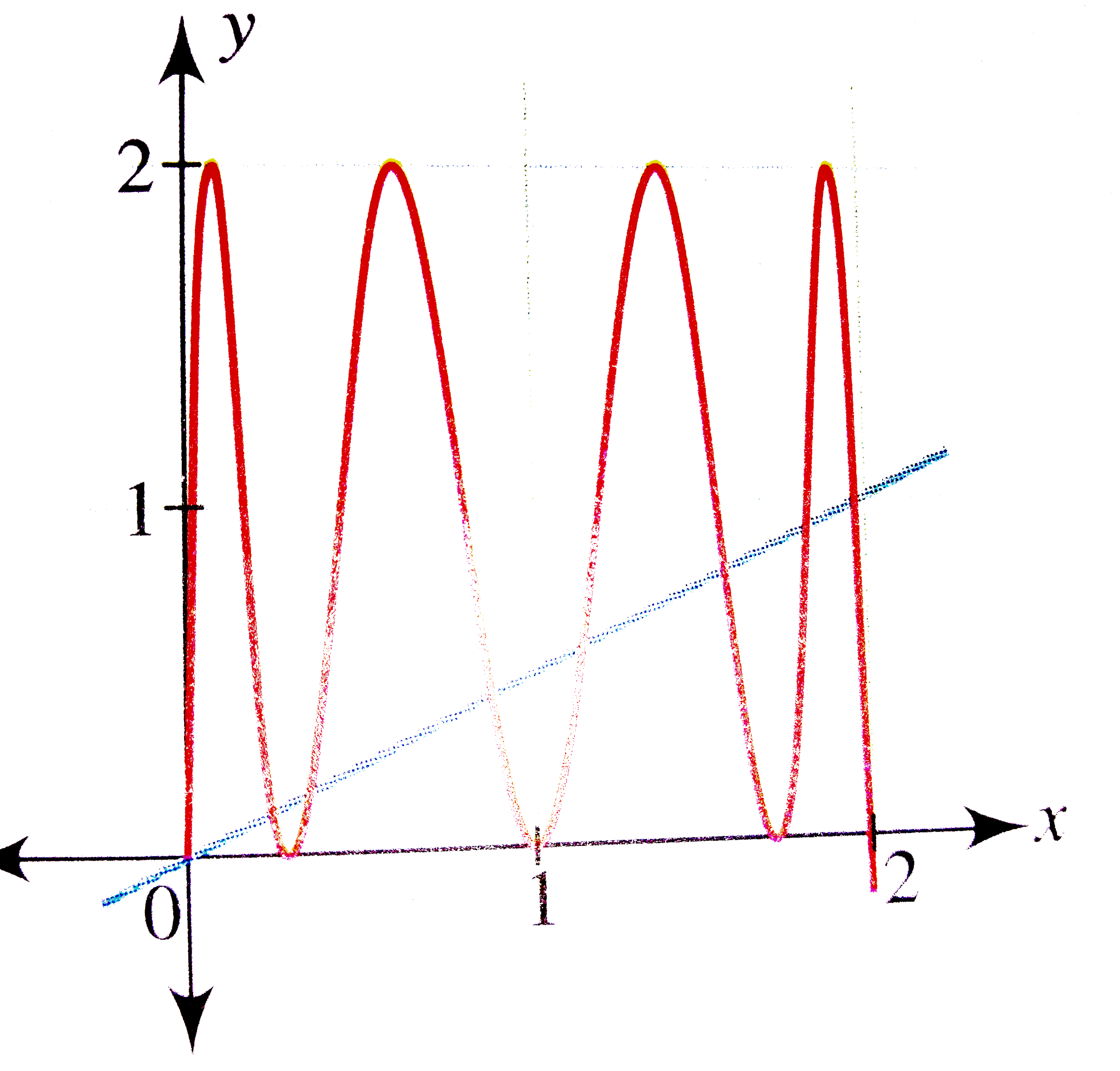Let f(x)=2x(2−x),0≤x≤2. Then find the number of solutions of f(f(f(x)))=x2.
Video Solution
Text Solution
We have f(x)=2x(2−x),0≤x≤2
The graph of y=f(x) is parabola, which is concave downwards as shown in the following figure.

Range of y=f(x) is [ 0, 2 ].
Now f(f(x))=2f(x)(2−f(x)), which is a fourth degree polynomial function.
f(f(x))=0theref0ref(x)=0orf(x)=2
∴ x=0,2or2x(2−x)=2
∴ x=0,1,1,2
Thus, f(f(x))=0 has four roots in which one root is repeated.
Also the range of y=f(f(x)) is [0, 2] as f(x)∈ [0, 2] for x∈ [0, 2].
So the graph of y=f(f(x)) is

With similar arguments, the graph of y=f(f(f(x))) is as follows :

Clearly, the line y=x/2 meets the graph of y=f(f(x)) in eight points, hence '8' roots.
|
Topper's Solved these Questions
- GRAPHS OF ELEMENTARY FUNCTIONS BOOK - CENGAGECHAPTER - GRAPHS OF ELEMENTARY FUNCTIONS EXERCISE - Exercise
34 Videos
- GRAPHS OF POLYNOMIAL AND RATIONAL FUNCTIONSBOOK - CENGAGECHAPTER - GRAPHS OF POLYNOMIAL AND RATIONAL FUNCTIONSEXERCISE - Exercise
13 Videos
- GRAPHS OF TRIGONOMETRIC FUNCTIONSBOOK - CENGAGECHAPTER - GRAPHS OF TRIGONOMETRIC FUNCTIONSEXERCISE - Exercise
22 Videos
Similar Questions
Knowledge Check
If f(x)=x2−6x+5,0≤x≤4 then f(8)=
A5B21C11Ddoes not existIf f(x)=x2−6x+9,0≤x≤4, then f(3)=
A4B1C0Ddoes not existLet f(x)=x(2−x),0≤x≤2. If the definition of f(x) is extended over the set R−[0,2] by f(x+1)=f(x), then f is a
Aperiodic function with period 1Bnon-periodic functionCperiodic function with period 2Dperiodic function with period 1/2
Let f(x) be defined in the interval [0,4] such that
f(x)=⎧⎪⎨⎪⎩1−x0≤x≤1x+21<x<24−x2≤x≤4 then the number of points where f(f(x)) is discontinuous is
View SolutionLet f(x)=max(x,x2x3)∈−2≤x≤2. Then:
View SolutionLet f(x)={1+x0≤x≤23−x2<x≤3, then the points of discontinuity of g(x)=f[f(x)] is/are
View SolutionLet f(x)=1+2sinx+2cos2x,0≤x≤π/2. Then
View SolutionIf f(x)=2x+3, where 1≤x≤2, then the range of the function f is given by
View Solution
